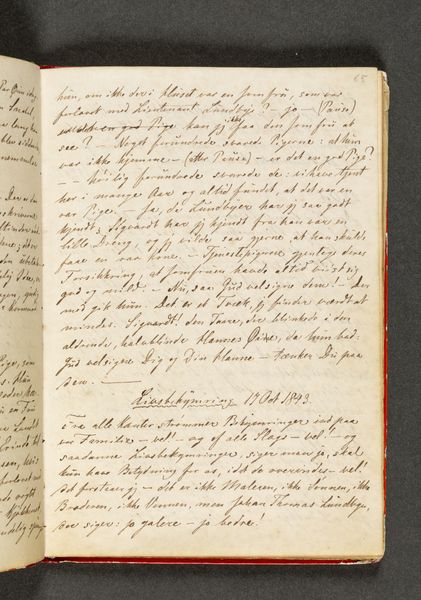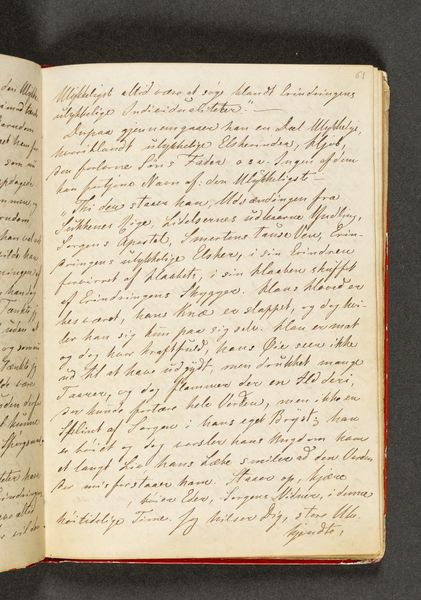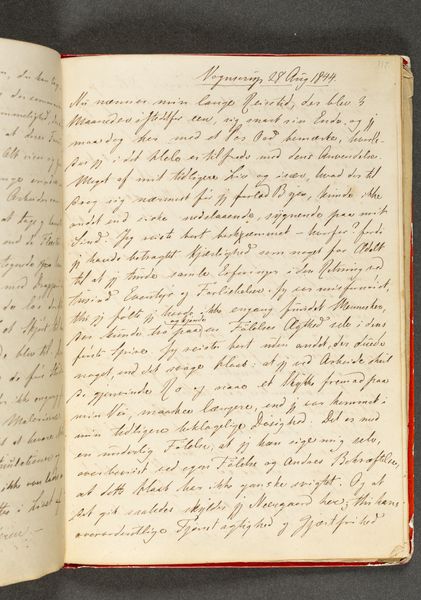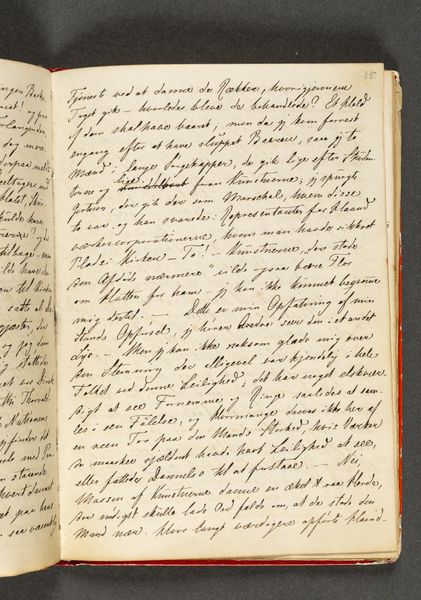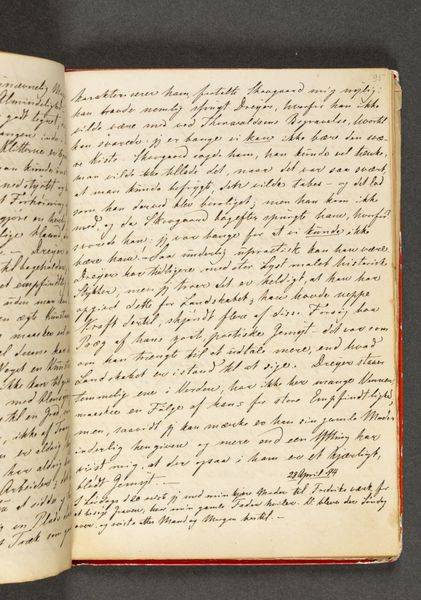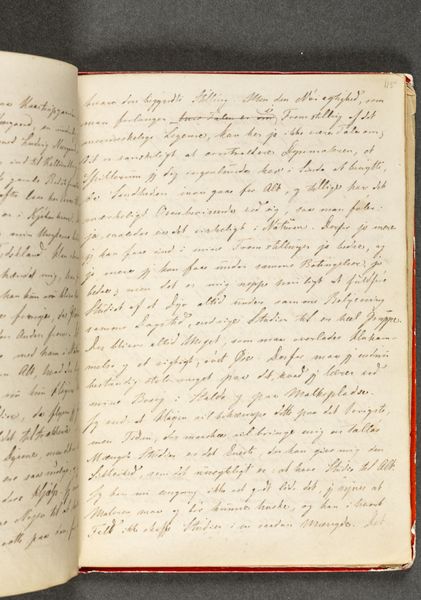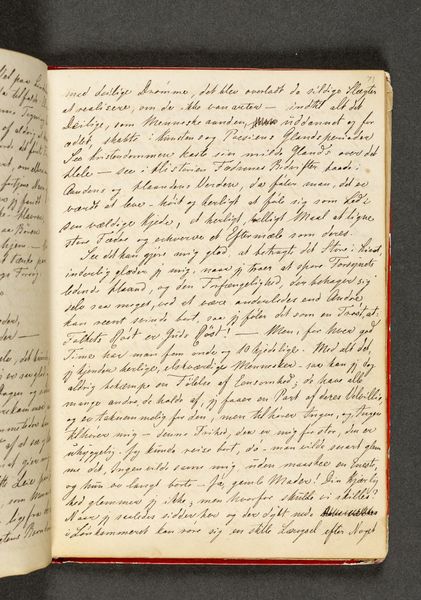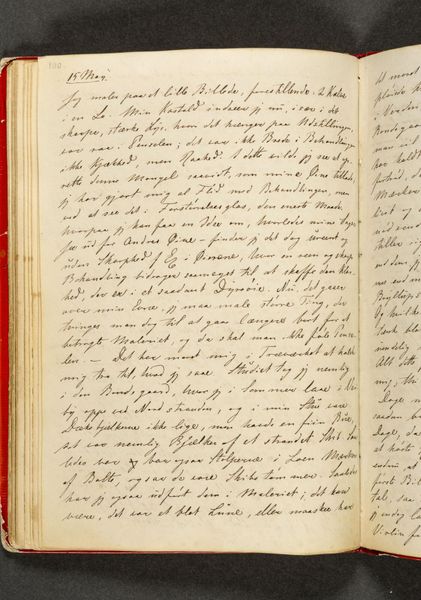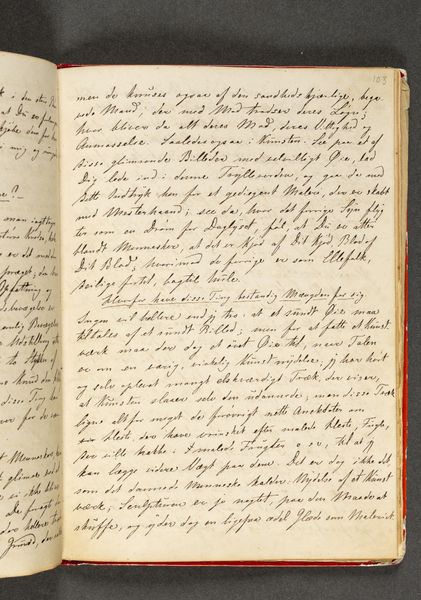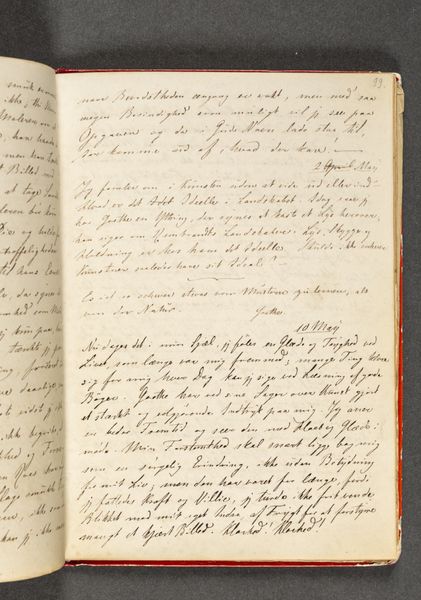
drawing, paper, ink
#
drawing
#
paper
#
ink
#
romanticism
Dimensions: 192 mm (height) x 133 mm (width) (bladmaal)
Curator: This diary page, “Nissen og Trolden. Dagbog. Side 131” by Johan Thomas Lundbye, dating from the early 1840s, presents us with an intriguing interplay of ink, drawing, and handwritten text on paper. What are your initial thoughts? Editor: The density of the handwriting is really striking; it feels very intimate, like catching a glimpse into the artist’s inner world. It’s just a page from a sketchbook but so beautiful; how can drawing and writing, like here, mix in one single artistic material? Curator: That's an interesting observation. Consider the physical properties of ink, and the very act of writing – a performative trace, if you will. Lundbye isn't simply conveying information. He's engaging in a process. How does the context of Romanticism play into the material quality of the sketchbook? Do you find a focus on nature and landscape is suggested by the tactile and handwritten quality of this particular page? Editor: I suppose so. The materials, like the ink bleeding into the paper, and even the act of writing rather than printing, lend a sense of the personal and imperfect, linking to Romanticism's interest in emotional expression, maybe like nature. Curator: Precisely. Furthermore, the artist’s hand and labor becomes evident. The journal shifts our perspective; we understand better Lundbye’s world because we grasp the way the artwork was produced. Would you say that understanding the means of production deepens our engagement with it? Editor: I think so! Focusing on the materiality has made me realise this journal page isn't just about what it depicts; it's about the artistic process itself, blurring lines between documentation and art object. Curator: Indeed. By thinking materially about this piece, we move beyond the simple imagery and start considering the context, labor and materiality of its creation.
Comments
No comments
Be the first to comment and join the conversation on the ultimate creative platform.


